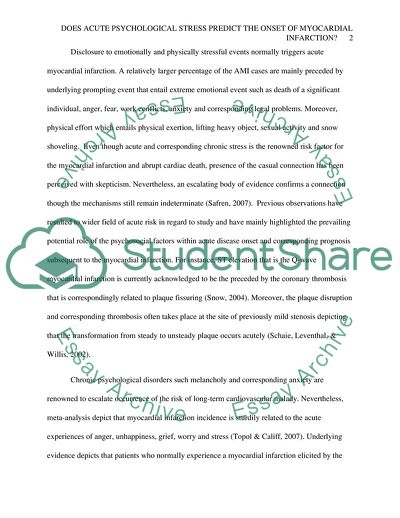Cite this document
(Does Acute Psychological Stress Predict the Onset of Myocardial Infarction Essay Example | Topics and Well Written Essays - 1250 words, n.d.)
Does Acute Psychological Stress Predict the Onset of Myocardial Infarction Essay Example | Topics and Well Written Essays - 1250 words. https://studentshare.org/psychology/1822492-does-acute-psychological-stress-predict-the-onset-of-myocardial-infarction
Does Acute Psychological Stress Predict the Onset of Myocardial Infarction Essay Example | Topics and Well Written Essays - 1250 words. https://studentshare.org/psychology/1822492-does-acute-psychological-stress-predict-the-onset-of-myocardial-infarction
(Does Acute Psychological Stress Predict the Onset of Myocardial Infarction Essay Example | Topics and Well Written Essays - 1250 Words)
Does Acute Psychological Stress Predict the Onset of Myocardial Infarction Essay Example | Topics and Well Written Essays - 1250 Words. https://studentshare.org/psychology/1822492-does-acute-psychological-stress-predict-the-onset-of-myocardial-infarction.
Does Acute Psychological Stress Predict the Onset of Myocardial Infarction Essay Example | Topics and Well Written Essays - 1250 Words. https://studentshare.org/psychology/1822492-does-acute-psychological-stress-predict-the-onset-of-myocardial-infarction.
“Does Acute Psychological Stress Predict the Onset of Myocardial Infarction Essay Example | Topics and Well Written Essays - 1250 Words”. https://studentshare.org/psychology/1822492-does-acute-psychological-stress-predict-the-onset-of-myocardial-infarction.


